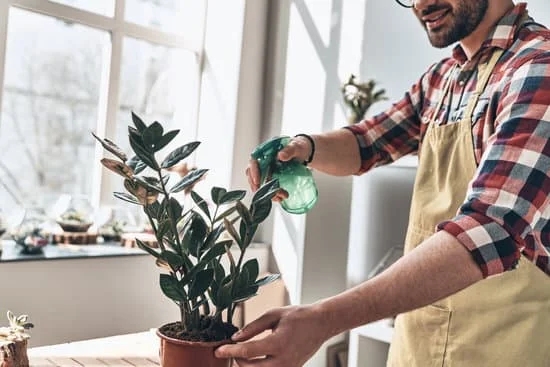House gardening ideas are not only a trendy hobby but also a beneficial practice that can enhance the overall atmosphere of your home. Incorporating plants into your living space is more than just decoration; it contributes to creating a healthy environment for you and your loved ones. From improving air quality to reducing stress levels, house gardening offers a plethora of advantages for your health and well-being.
By cultivating a house garden, you can enjoy the therapeutic effects of nature right within the comfort of your own home. Whether you opt for indoor or outdoor gardening, the act of caring for plants can be a rewarding experience that promotes relaxation and mindfulness. In addition to its mental health benefits, house gardening allows you to connect with nature and cultivate a green sanctuary that adds beauty and serenity to your living space.
From selecting the right tools and supplies to designing an aesthetically pleasing garden layout, there are various aspects to consider when embarking on your house gardening journey. Whether you have limited space or lead a busy lifestyle, there are numerous creative and low-maintenance gardening ideas that cater to different needs and preferences. With the right guidance and techniques, anyone can transform their home environment through the power of house gardening.
Benefits of House Gardening for Health and Well-Being
House gardening offers a plethora of benefits that extend beyond just enhancing the aesthetic appeal of your home. One of the key advantages is the positive impact it can have on your health and overall well-being.
Engaging in house gardening activities allows you to connect with nature, reduce stress levels, and promote a sense of calmness and relaxation in your daily life. Additionally, cultivating plants indoors or outdoors can provide numerous physical health benefits such as improved air quality, better respiratory function, and increased exposure to natural light.
To fully reap the health benefits of house gardening, it is essential to understand the different types of gardening practices available. Indoor gardening involves cultivating plants inside your home, apartment, or office space through containers or hydroponic systems. This type of gardening is perfect for individuals who have limited outdoor space or live in urban environments.
On the other hand, outdoor gardening allows you to utilize your yard, balcony, or patio for planting flowers, herbs, vegetables, and other greenery. Regardless of whether you choose indoor or outdoor gardening, both options provide opportunities for relaxation and mental rejuvenation.
In order to embark on a successful house gardening journey that prioritizes health and well-being, it is crucial to invest in the right tools and supplies. Basic equipment such as watering cans, pots or planters, soil mixtures, pruners, and gardening gloves are essential for maintaining your garden effectively.
Furthermore, consider incorporating organic fertilizers and pest control methods into your gardening routine to ensure that your plants thrive naturally without harmful chemicals. By equipping yourself with the necessary tools and knowledge, you can create a healthy and sustainable house garden that contributes positively to your overall wellness.
Types of House Gardening
House gardening can be a versatile and fulfilling activity, whether you have a spacious backyard or limited indoor space. Understanding the differences between indoor and outdoor gardening can help you make the most of your gardening efforts. Indoor gardening involves growing plants inside your home, typically in containers or pots, while outdoor gardening takes place in a yard, garden bed, or patio.
One of the main benefits of indoor gardening is the ability to grow plants year-round regardless of the weather outside. This allows you to enjoy fresh herbs, vegetables, and flowers even during the colder months. Additionally, indoor plants can help purify the air in your home and create a peaceful atmosphere.
On the other hand, outdoor gardening provides more space for larger plants and trees to thrive. It also allows for natural pollination and exposure to sunlight, which are essential for many plant species.
When it comes to choosing between indoor and outdoor gardening, consider factors such as sunlight exposure, temperature control, and available space. Some plants may require direct sunlight for several hours a day, making them better suited for outdoor gardens. In contrast, low-light houseplants like pothos or spider plants thrive indoors with minimal light requirements. By understanding the unique needs of indoor and outdoor gardening, you can create a beautiful and thriving garden that enhances your living environment.
| Indoor Gardening | Outdoor Gardening |
|---|---|
| Can grow plants year-round | Provides more space for larger plants and trees |
| Allows for fresh herbs and vegetables indoors | Natural pollination from insects and birds |
| Purifies the air in your home | Exposure to natural sunlight |
Essential Tools and Supplies for House Gardening
House gardening has become an increasingly popular activity for individuals who want to bring life and greenery into their homes, even in tight spaces like balconies, windowsills, and tiny yards. Whether you’re a seasoned gardener or just starting out, having the right tools and supplies is essential to ensure the success of your house gardening project.
Basic Gardening Tools
One of the most important aspects of house gardening is having the right tools to help you tend to your plants. Some basic gardening tools that every house gardener should have include a trowel for planting and transplanting, pruning shears for trimming plants, a watering can or hose for irrigation purposes, and gardening gloves to protect your hands from thorns and dirt. Investing in high-quality tools can make your gardening tasks easier and more enjoyable.
Soil and Fertilizers
The type of soil you use for your house gardening project can greatly impact the growth and health of your plants. Opt for high-quality potting mix that provides proper drainage while retaining moisture to support plant growth. Additionally, consider using organic fertilizers or compost to provide essential nutrients to your plants naturally. It’s important to replenish the soil with fertilizers regularly as potted plants rely on these added nutrients for healthy growth.
Pots and Containers
Since house gardening often takes place in limited spaces, choosing the right pots and containers is crucial. Select pots with drainage holes at the bottom to prevent waterlogging issues that can lead to root rot. Consider using lightweight containers made from materials like plastic or resin for easy mobility and maintenance. Get creative with different sizes, shapes, and colors of pots to add visual interest to your house garden while ensuring they complement your indoor or outdoor space’s aesthetic.
Creative Ways to Design Your House Garden
Designing your house garden is an exciting opportunity to showcase your creativity and personality. Whether you prefer a modern, sleek look or a cozy, rustic vibe, there are endless possibilities to make your indoor or outdoor garden space uniquely yours. Here are some creative ideas to help inspire your house gardening design:
- Vertical Gardens: Utilize wall space by installing vertical planters or hanging baskets for a stunning green display.
- Fairy Gardens: Create a magical miniature world with tiny plants, fairy figurines, and charming accessories.
- Zen Gardens: Cultivate a sense of peace and tranquility with a minimalist Japanese-inspired garden featuring rocks, sand, and carefully placed plants.
In addition to these unique garden designs, consider incorporating elements such as water features, colorful containers, lighting accents, and garden art to add visual interest and enhance the overall ambiance of your space. By thinking outside the box and experimenting with different styles and concepts, you can elevate your house gardening experience to new heights.
Remember
- Consider the size and layout of your space before choosing a design concept.
- Mix and match different plants, textures, and colors for a dynamic look.
- Don’t be afraid to experiment and personalize your garden to reflect your tastes and preferences.
With these creative house gardening ideas in mind, you can transform your home into a beautiful oasis that brings joy, relaxation, and inspiration to both you and your guests. Let your imagination run wild as you build a garden that truly speaks to who you are and enhances the beauty of your living environment.
Low-Maintenance House Gardening Ideas for Busy Individuals
House gardening is a wonderful way to bring the beauty of nature into your home, even if you have a busy schedule. For busy individuals who still want to enjoy the benefits of gardening without the high maintenance associated with it, there are plenty of low-maintenance house gardening ideas that can work wonders.
One great idea is to choose plants that are easy to care for and require minimal attention, such as succulents, cacti, or air plants. These plants are resilient and can thrive even if you forget to water them occasionally.
In addition to selecting low-maintenance plants, another idea for busy individuals is to create a self-watering system for your house garden. This can be done by using watering globes, self-watering pots, or drip irrigation systems. These systems help ensure that your plants receive adequate moisture even if you’re away from home for an extended period. Furthermore, incorporating mulch into your house garden can help retain soil moisture and reduce the frequency of watering needed.
For those with limited time on their hands, container gardening is a practical and low-maintenance option. Container gardens offer flexibility in terms of placement and can be easily moved around your home based on sunlight requirements or aesthetic preferences.
Another tip for busy individuals is to invest in a timer for watering your plants. This handy device can be programmed to automatically water your house garden at specific times, making it much easier to maintain your plants while juggling a hectic schedule.
| House Gardening Tip | Description |
|---|---|
| Choose Low-Maintenance Plants | Opt for resilient plants like succulents and air plants that require minimal care. |
| Create Self-Watering Systems | Set up watering globes or drip irrigation to ensure your plants receive enough moisture. |
| Utilize Container Gardens | Container gardening provides flexibility and ease of movement for busy individuals. |
Tips for Growing Herbs and Vegetables in Your House Garden
Growing your own herbs and vegetables at home can be a rewarding experience that allows you to have fresh, organic produce right at your fingertips. Whether you have a spacious backyard or limited space in an apartment, there are various tips and tricks to successfully grow herbs and vegetables in your house garden.
Choosing the Right Plants
When selecting which herbs and vegetables to grow in your house garden, consider the amount of space you have available, the climate you live in, and your personal preferences. Herbs like basil, mint, and parsley are suitable for indoor gardening as they thrive in pots and containers. For vegetables, options like tomatoes, lettuce, and peppers can also be grown indoors with enough sunlight.
Providing Adequate Light and Water
Proper lighting is crucial for the growth of herbs and vegetables. Most plants need at least 6-8 hours of sunlight daily. If natural light is limited in your house, consider using artificial grow lights to supplement. Additionally, make sure to water your plants regularly but avoid overwatering as it can lead to root rot. Be mindful of each plant’s specific watering requirements.
Caring for Your Plants
Regular maintenance is essential for the health of your herb and vegetable garden. Keep an eye out for any signs of pests or diseases and address them promptly. Pruning herbs can help promote growth and prevent legginess. For vegetables like tomatoes, provide support structures as they grow taller to prevent them from toppling over.
By following these tips for growing herbs and vegetables in your house garden, you can enjoy a bountiful harvest of fresh produce while adding greenery and beauty to your living space. With a little time and effort, you can nurture a thriving garden right inside your home.
House Gardening Ideas for Small Spaces
House gardening is not exclusive to those with sprawling yards or acres of land. Even those living in apartments, condos, or homes with limited outdoor space can still enjoy the benefits of gardening. Balconies, windowsills, and tiny yards can all be transformed into beautiful green spaces with a little creativity and planning. In fact, these small spaces can often be the perfect canvas for creating a cozy and inviting garden oasis right at your doorstep.
When it comes to house gardening ideas for small spaces like balconies, windowsills, or tiny yards, vertical gardening is a popular and practical solution. Utilizing wall space by installing shelves, hanging planters, or trellises can maximize the amount of greenery you can fit in a limited area. This not only adds visual interest but also helps create a sense of depth and dimension in your mini garden.
For balconies specifically, container gardening is an ideal way to bring life to this outdoor space. Choose plants that thrive in containers such as herbs, succulents, or flowering plants that do well in confined areas.
Additionally, using tiered plant stands or railing planters can help make the most of the available space while adding layers of greenery to your balcony. Whether you have a small balcony or just a narrow strip along your windowsill, there are plenty of house gardening ideas that cater to limited spaces without compromising on style or charm.
House Gardening DIY Projects
House gardening is not only beneficial for your health and well-being, but it can also be a great opportunity to showcase your creativity and DIY skills. Upcycling and repurposing items for your house garden can not only add a unique aesthetic to your space but also contribute to sustainable living practices. By giving new life to old or discarded items, you can create a one-of-a-kind garden that reflects your personality and style.
One popular house gardening DIY project involves using old wooden pallets to create vertical gardens. These pallet gardens not only save space but also provide a beautiful backdrop for growing herbs, flowers, or even small vegetables. By adding some hooks or shelves, you can hang the pallet garden securely on a wall or fence, turning any blank space into a lush green oasis. This project is perfect for small spaces like balconies or patios where floor space may be limited.
Another creative idea for upcycling in your house garden is repurposing old containers into planters. From tin cans and mason jars to wine bottles and even old boots, almost anything can be transformed into a unique planter for your plants. Not only does this add visual interest to your garden, but it also reduces waste by giving new purpose to items that would have otherwise been thrown away.
Plus, the eclectic mix of containers adds charm and character to your outdoor or indoor garden space. With some creativity and imagination, the possibilities are endless when it comes to upcycling and repurposing items for your house gardening projects.
Conclusion
In conclusion, house gardening offers a multitude of benefits that can truly transform your home environment and lifestyle. By bringing nature into your living spaces, you not only enhance the visual appeal of your home but also create a healthier and more vibrant atmosphere. Whether you choose to engage in indoor or outdoor house gardening, the act of nurturing plants can have a positive impact on your well-being and overall quality of life.
Implementing house gardening ideas in your home allows you to reap the rewards of fresh herbs and vegetables, adding a touch of sustainability to your daily life. By incorporating creative design elements into your house garden and utilizing low-maintenance techniques, even busy individuals can enjoy the therapeutic benefits of tending to plants. With the right tools and supplies at hand, you can easily cultivate a flourishing garden within the confines of small spaces like balconies, windowsills, or tiny yards.
Furthermore, engaging in house gardening DIY projects such as upcycling and repurposing materials for your garden aesthetic can not only unleash your creativity but also promote eco-friendly practices. These projects offer a unique opportunity to personalize your garden space while reducing waste and contributing positively to the environment.
Ultimately, by embracing house gardening ideas and incorporating them into your home, you can create a sanctuary that nurtures both mind and body, fostering a deeper connection with nature within the comfort of your own abode.
Frequently Asked Questions
Which Plant Is Best for Home Garden?
The best plant for a home garden depends on various factors such as the climate, sunlight exposure, and personal preferences. Some popular choices include roses for their beauty and fragrance, tomatoes for homegrown produce, and lavender for its soothing scent.
What Is the Garden in Front of the House Called?
The garden in front of a house is typically referred to as the front yard or front garden. This area is often used for landscaping purposes, creating curb appeal, and welcoming guests with beautiful plants, flowers, and sometimes even a well-manicured lawn.
What Is a Garden Just Outside the House Called?
A garden just outside the house is commonly known as the backyard or back garden. This outdoor space can serve various purposes such as entertaining guests, growing vegetables or herbs, relaxing in a peaceful environment surrounded by nature, or simply enjoying some fresh air.

Welcome to my gardening blog! I am passionate about plants and enjoy sharing my knowledge and experiences with others. In this blog, I will write about everything related to gardening, from tips on how to get started to updates on my own garden projects.





